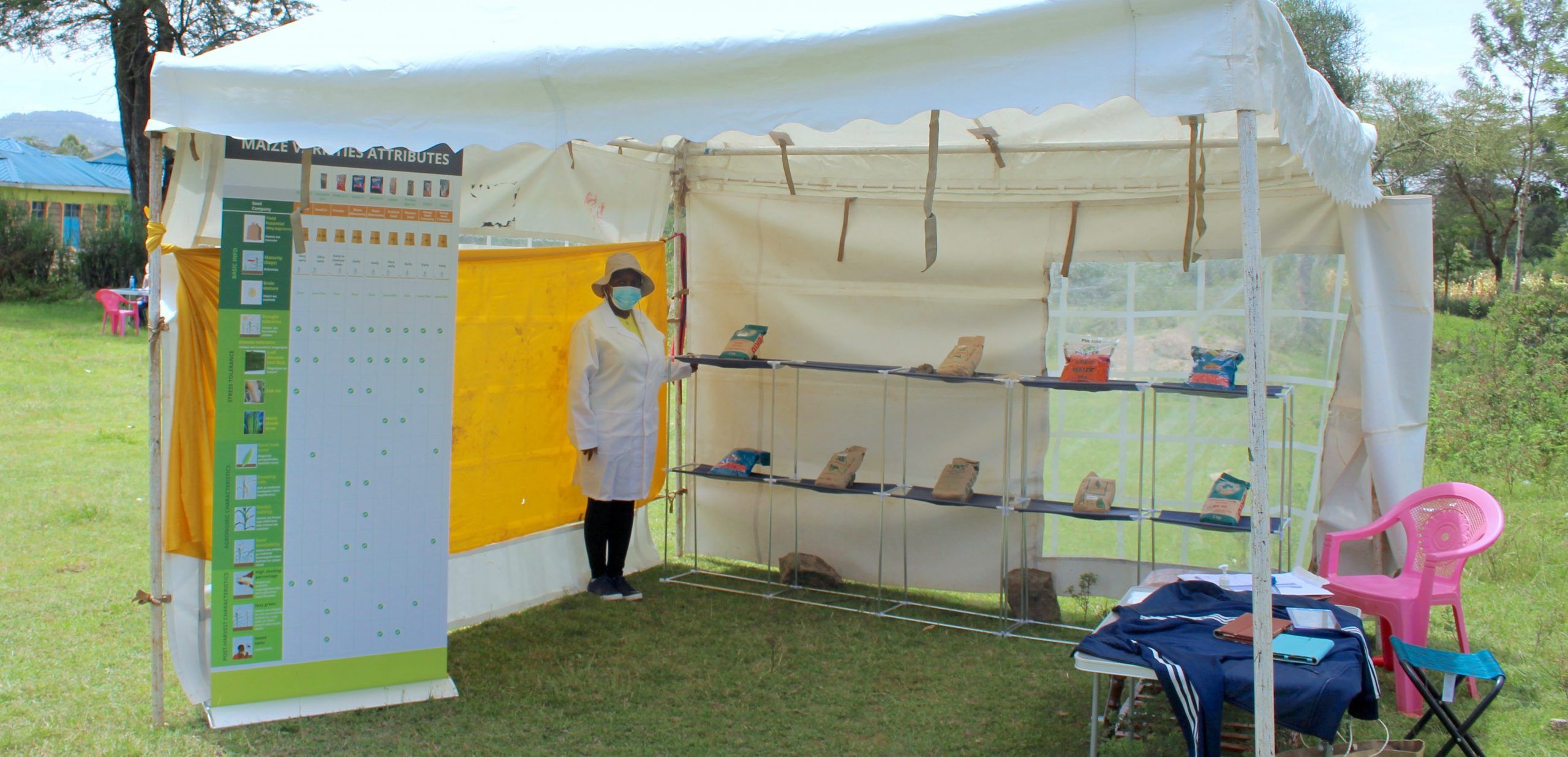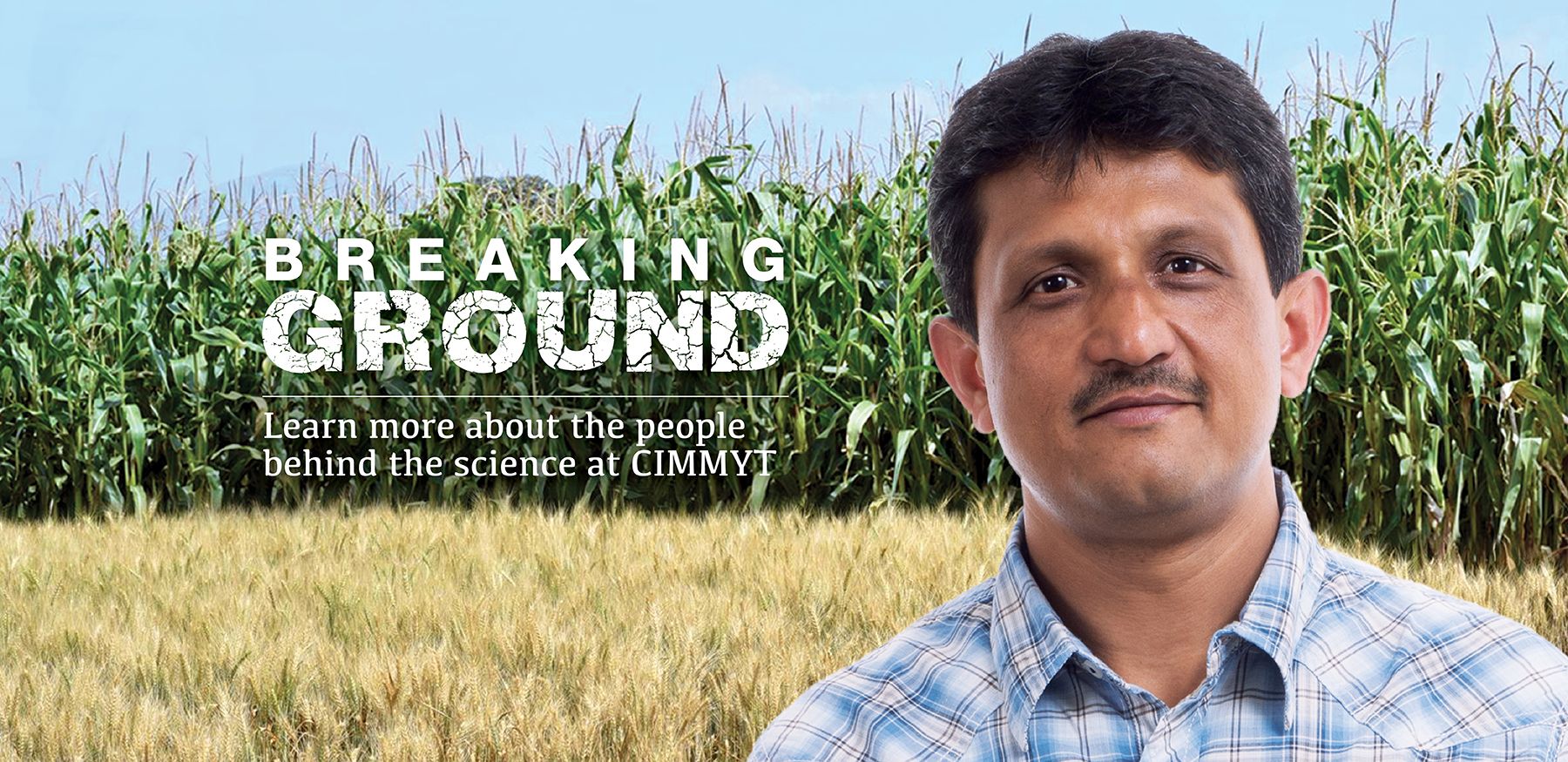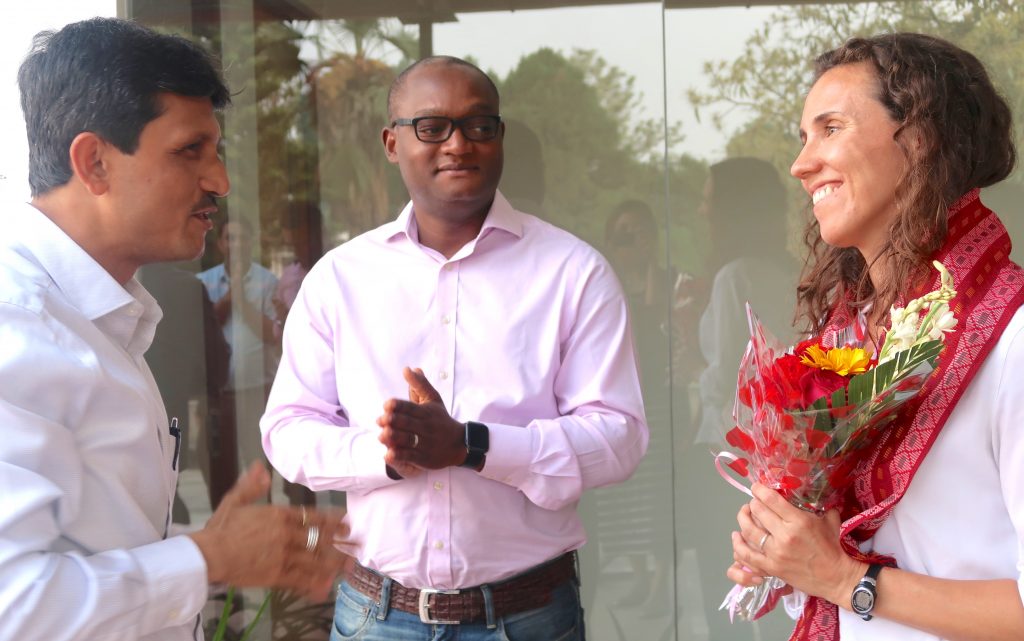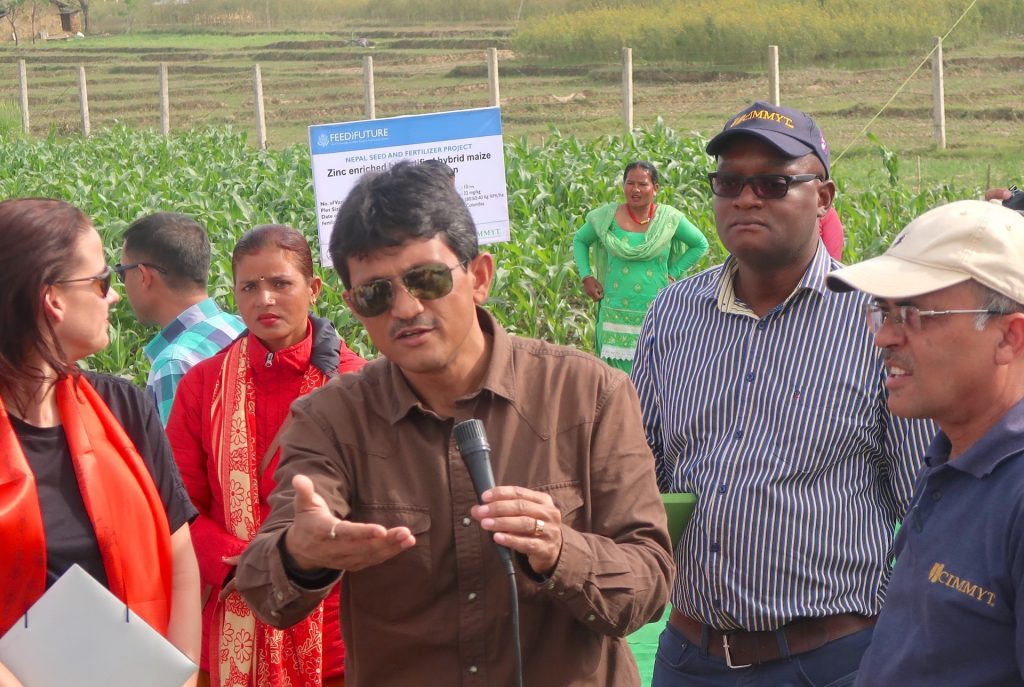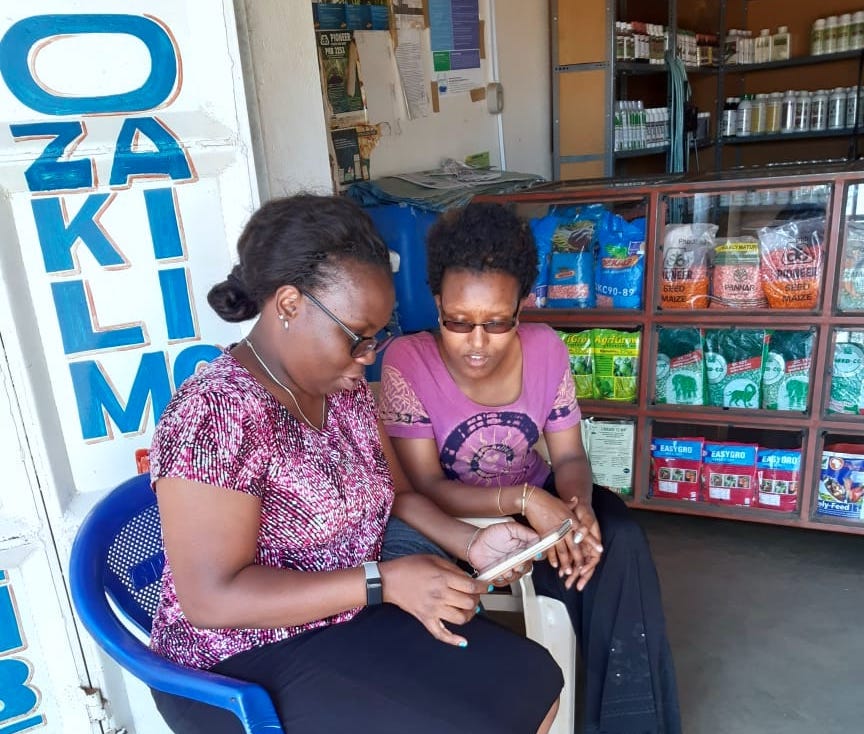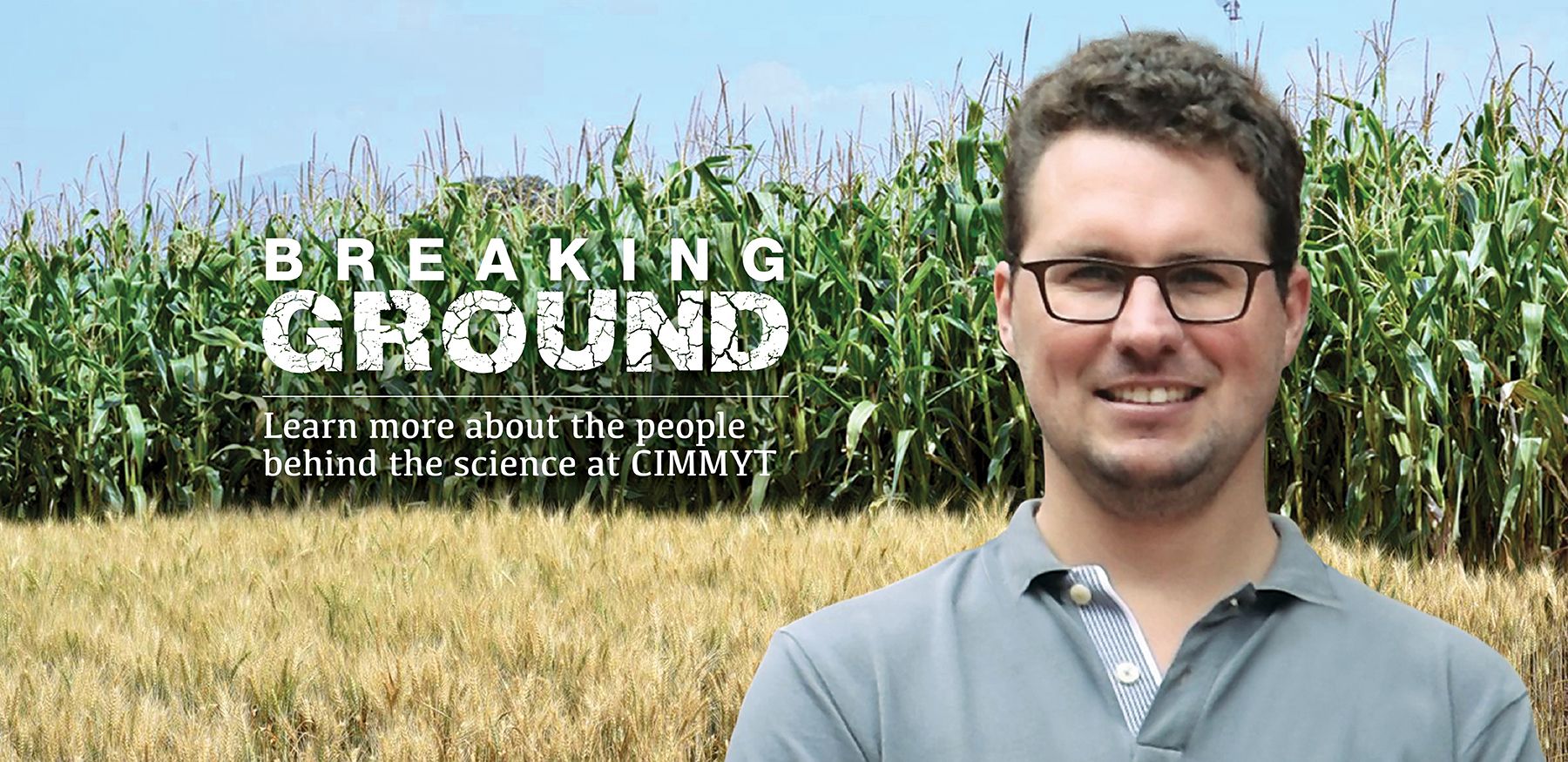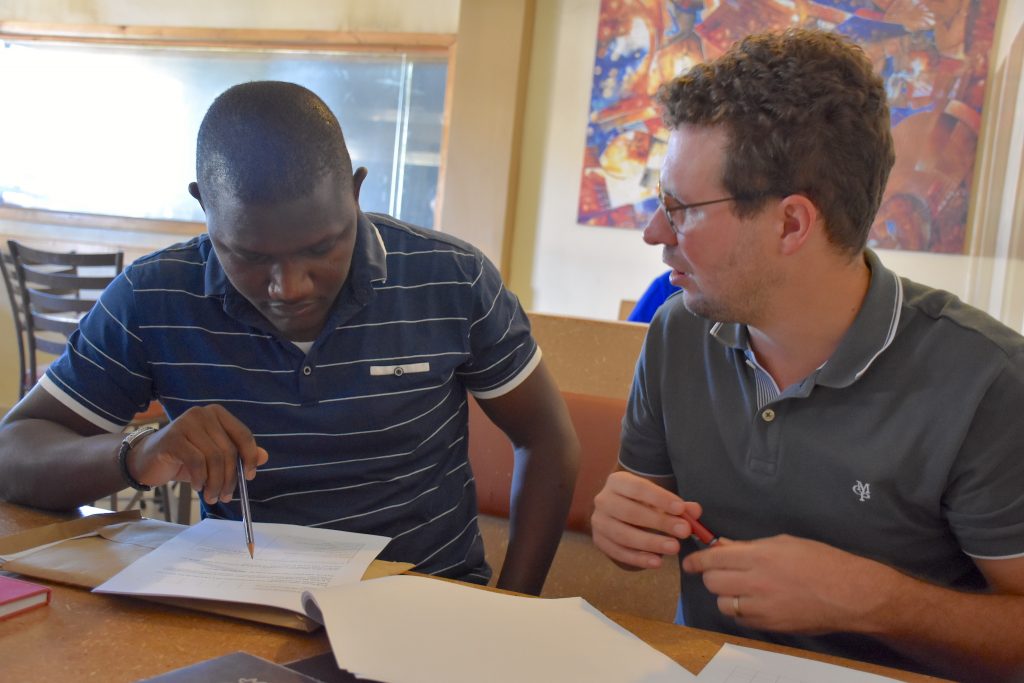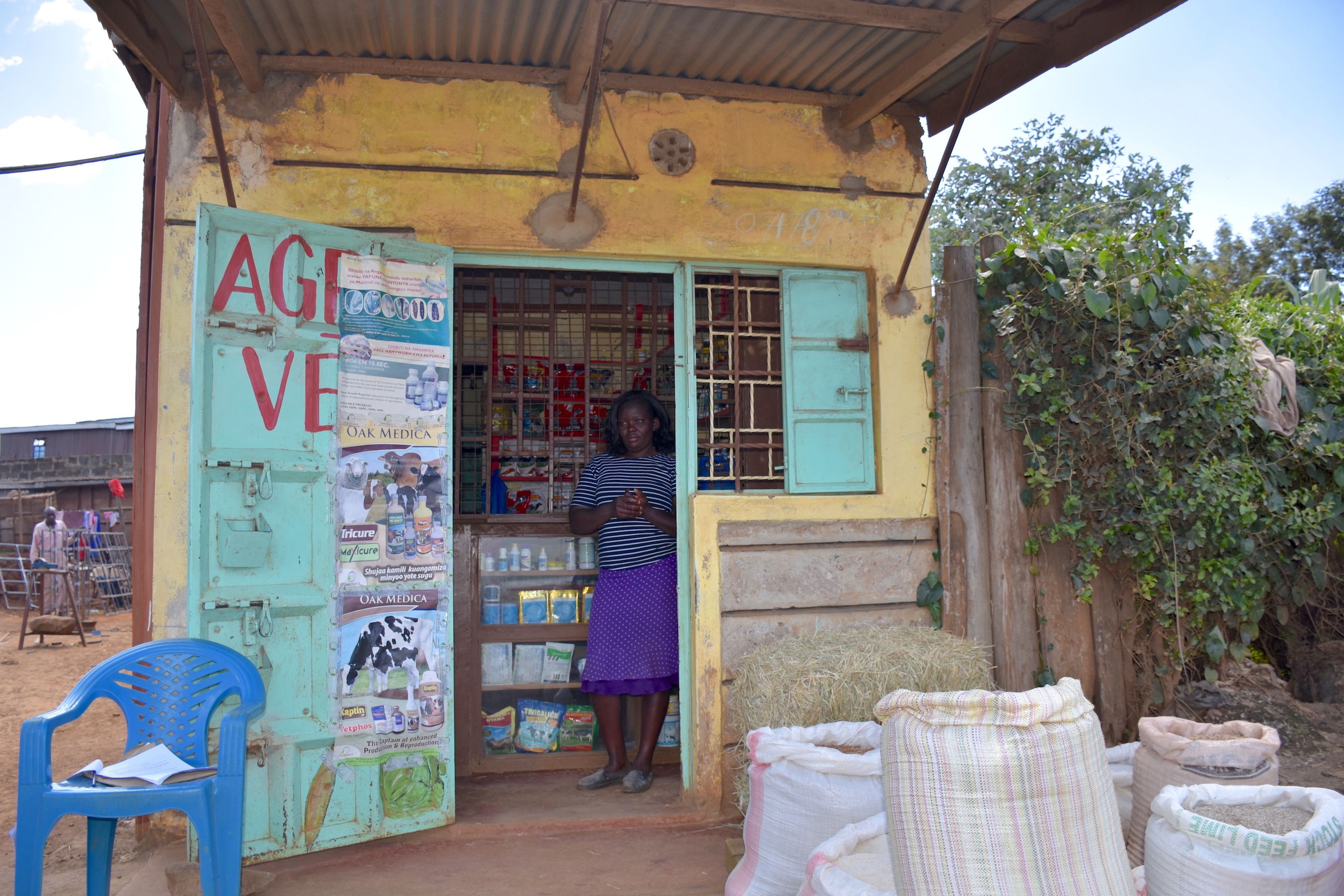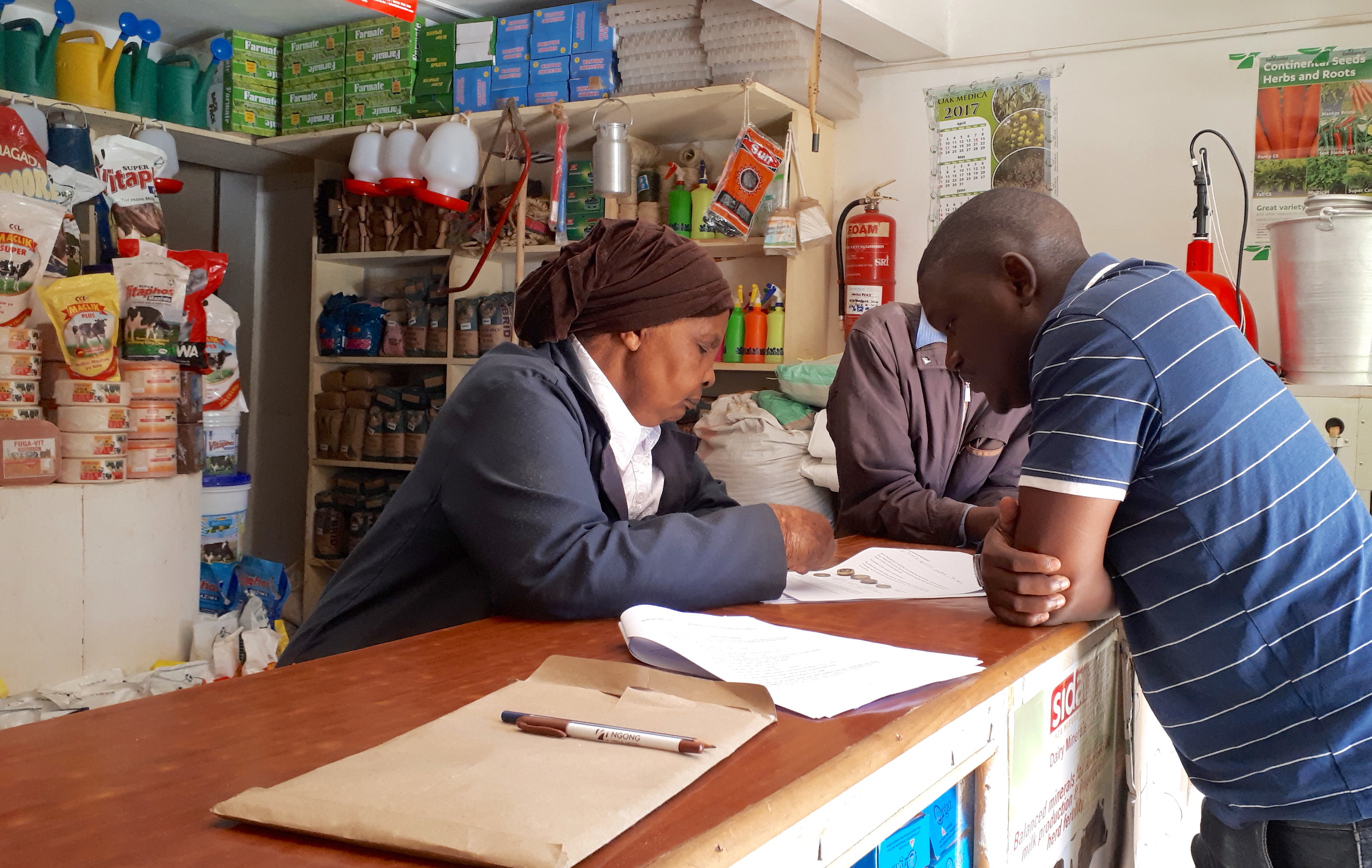Buying into new seed
Mary Nzau enters a mock agrodealer shop set up on a field on the outskirts of Tala town in Machakos County, Kenya. On display are nine 2kg bags of hybrid maize seed. She picks one. By the look of it, her mind is made up. After a quick scan of the shelf, she has in her hand the variety that she has been purchasing for years.
Regina Mbaika Mutua is less lucky. The variety she always buys is not on display in the mock shop. As part of the experiment, the research team has removed from the shelf the variety she indicated she usually buys. The team’s goal is to observe what factors influence her seed purchase decision in the absence of the variety she was expecting to purchase.
“Although I did not find the variety I was looking for, I picked an alternative as I have seen it perform well on a neighboring farm,” Mutua says, adding that she will plant it this season alongside recycled (farm-saved) seed on her one-acre farm.
Michael Mutua passes up the popular variety he has been planting for the previous two years. He picks one that has been advertised extensively on local radio. “I have heard about it severally on radio. I would like to experiment with this new seed and see how it performs on my farm. Should I like the results, I will give it a chance in ensuing seasons,” he says.
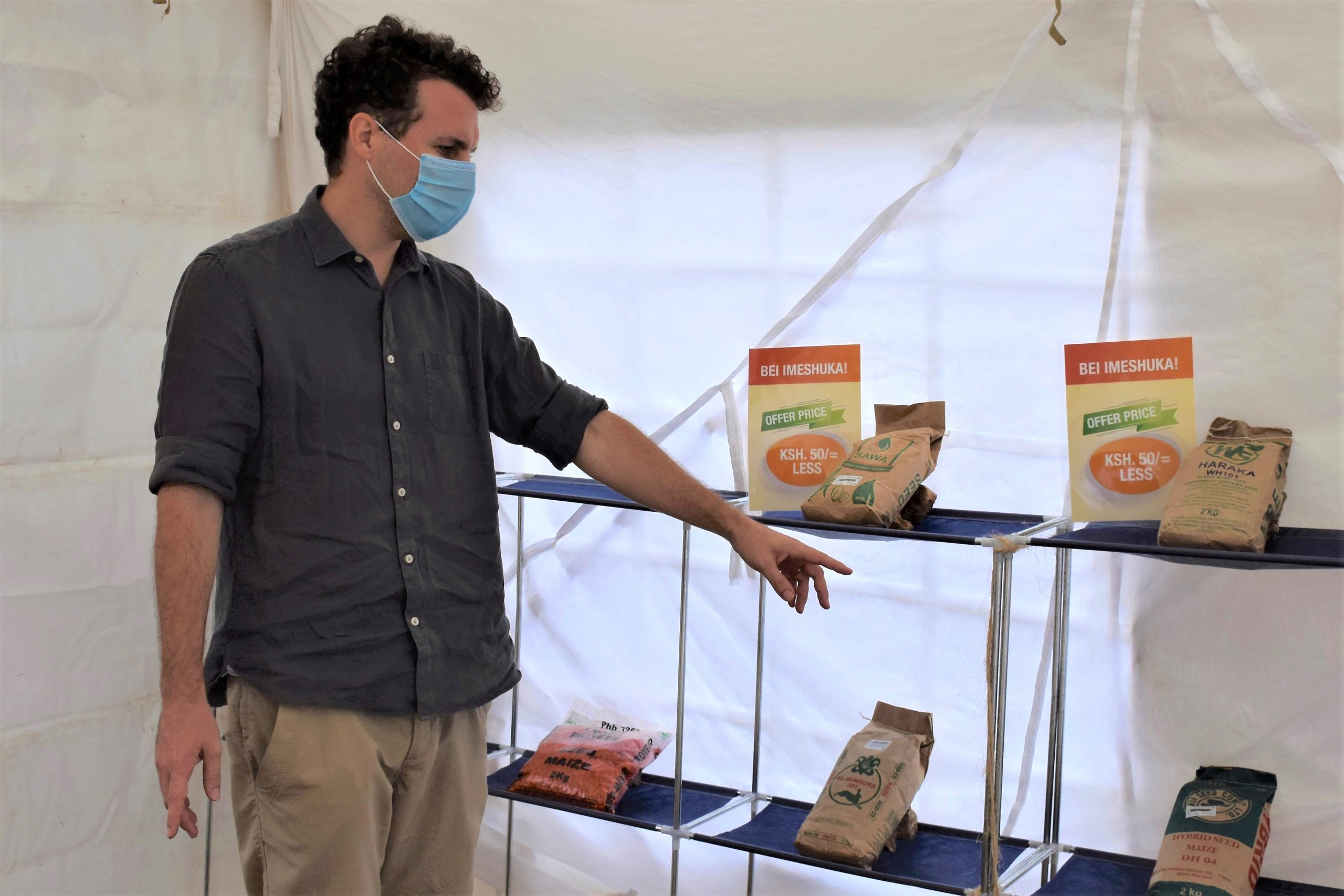
The big adoption conundrum
The goal of the out-of-stock study is to improve an understanding of how farmers make their maize seed choices, says Pieter Rutsaert, Markets and Value Chain Specialist at the International Maize and Wheat Improvement Center (CIMMYT).
“We do this by inviting farmers to a mock agrodealer store that we set up in their villages and give them a small budget to purchase a bag of seed. However, not all farmers walk into the same store: some will find their preferred variety, others won’t. Some will have access to additional trait information or see some varieties with price promotions while others don’t.”
Rutsaert acknowledges that breeding programs and their partner seed companies have done a great job at giving farmers access to maize hybrids with priority traits such as drought tolerance and high yield. CIMMYT then works closely with local seed companies to get varieties into the hands of farmers. “We want to extend that support by providing insights to companies and public breeding programs on how to get new varieties more quickly into the hands of farmers,” he says.
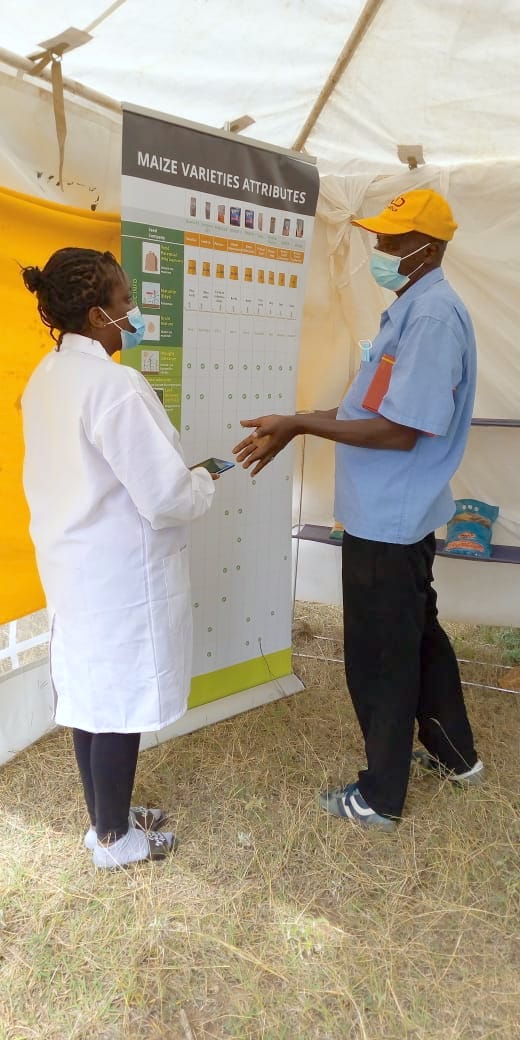
The hybrid maize seed sector in Kenya is highly competitive. Amid intensifying competition, new varieties face a daunting task breaking into the market, independent of their quality. While farmers now have more options to pick from, a major challenge has been how to get them to adopt new varieties.
“Moving farmers from something they know to something they don’t is not easy. They tend to stick with what they know and have been growing for years,” Rutsaert says.
Pauline Muindi, gender research associate with CIMMYT, acted as the stand-in clerk at the mock store. She noticed that farmers tend to spend very little time in the shop when their preferred variety is available. However, this all changes in the out-of-stock situation, pushing farmers to step out of their comfort zone and explore new options.
The first step to overcoming this challenge is to entice maize farmers to try a new seed variety, even just once, Rutsaert observes. If it is a good variety, farmers will see that and then the market will work in its favor: farmers will come back to that variety in subsequent years and tell others about it.
“The good news is that many of the varieties we are currently seeing on the market have performed well — that’s why they’re popular. But there are newer varieties that are even better, especially in terms of attributes like drought tolerance. We would like to understand how farmers can be convinced to try out these newer varieties. Is it about the need for more awareness on varietal traits? Can we use price promotions? Or are there other factors?” he says.
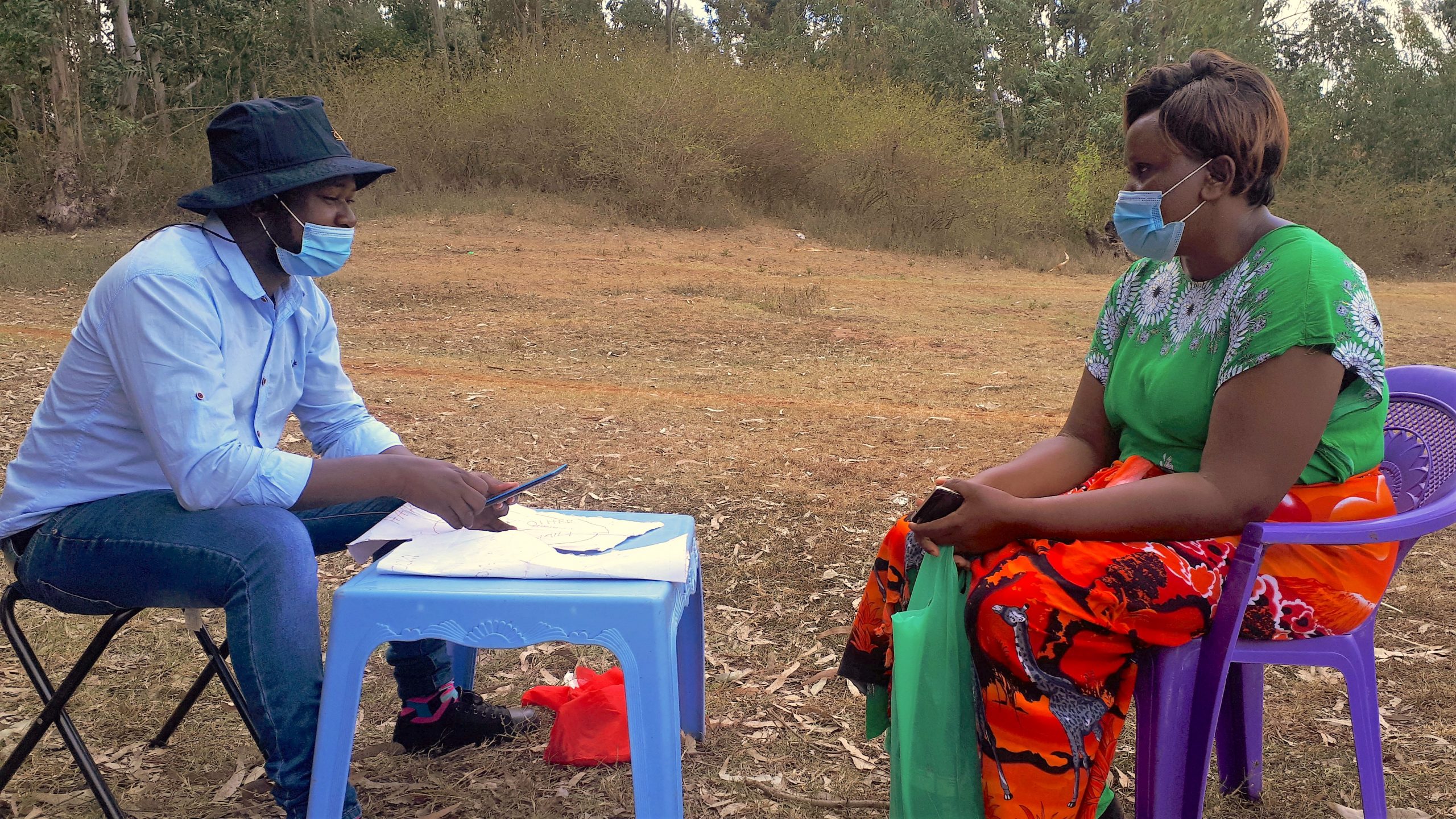
Does seed price matter?
“With today’s climate uncertainty, it is better to stick to a variety that is adapted to such climate rather than banking on a variety one is oblivious of. The risk is not worth it,” Nzau says. She adds that she would rather buy a higher-priced seed packet she knows and trusts than a lower-priced one that she has not used in the past. Radio promotions of new or other varieties have limited sway over her decision to make the switch.
Faith Voni, another farmer, agrees. “It is better to purchase a higher-priced variety whose quality I can vouch for than risk purchasing a lower-priced one that I know little about. I do not wish to take such a risk.” Voni says she would also be more inclined to experiment with another variety that she had seen perform well on a neighbor’s farm.
Michael Mutua holds a different view. “If there is an option of an equally good but new variety that is lower-priced than the variety I prefer, my wallet decides,” he says.
Vivian Hoffmann, an economist at the International Food Policy Research Institute (IFPRI) and collaborator on the study, says price can be key for convincing consumers to try a new product. “Our previous research on maize flour choice found that a provisional 10 percent discount boosted sales tremendously,” Hoffmann says. “Of course, that only gets your foot in the door; after that, a new variety will need to win farmers over based on its merits.”
Hoffmann is interested in the extent to which drawing farmers’ attention to key varietal attributes influences their seed choice. “This information is generally already available on seed packets, but we live in a world of information overload. Promoting certain attributes through in-store signage is an approach that is widely used to help consumers make more healthier food choices. Doing the same for new seed varieties makes a lot of sense.”
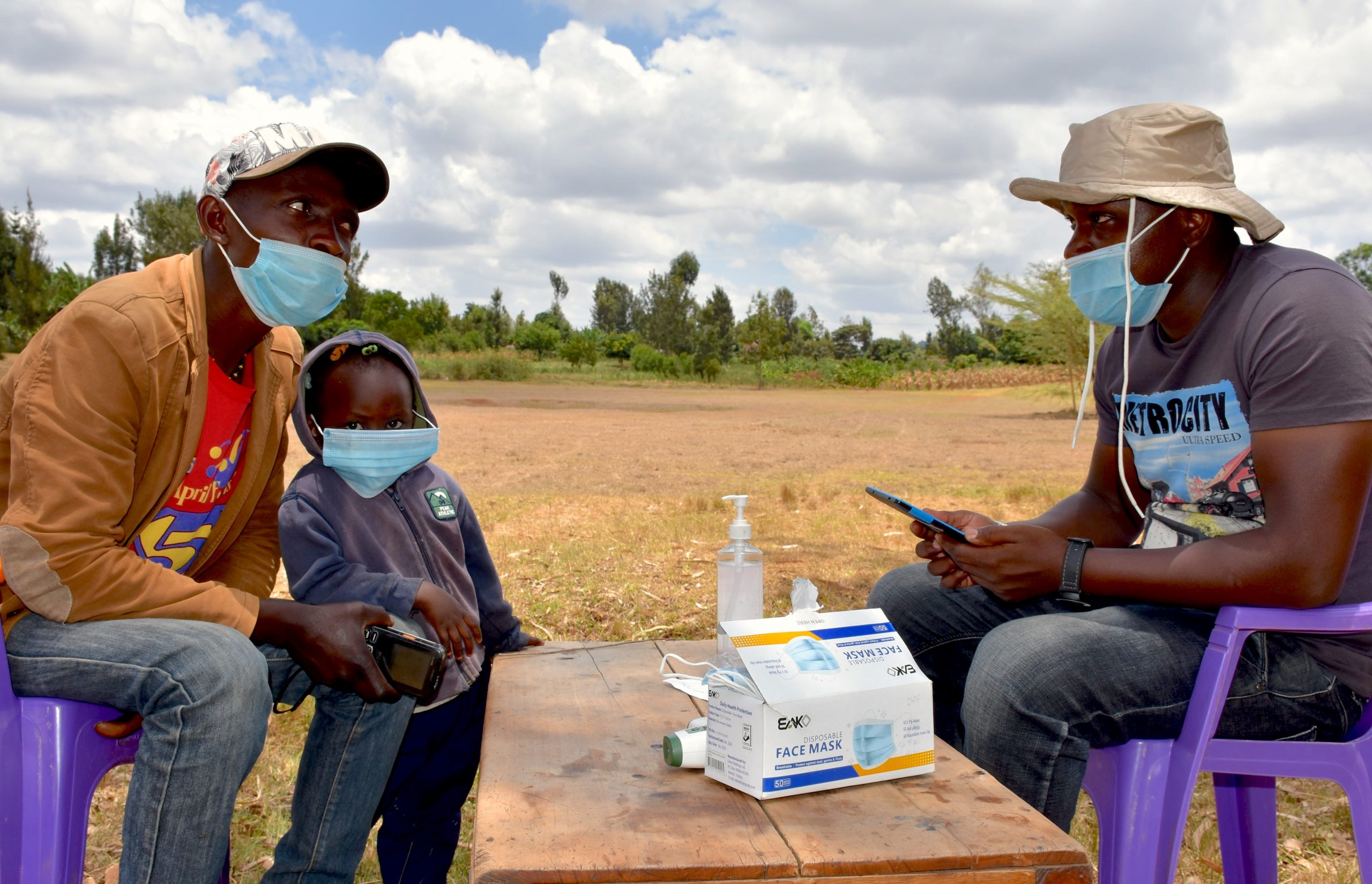
The value of drought tolerance
Situated on Kenya’s eastern region, Machakos is characterized by persistent water stress. Climate change induced erratic rainfall has pushed traits that can tolerate the unfavorable weather conditions in the favorite’s corner. While other traits such as high yield and disease resistance are equally important, the seed, when planted, must first withstand the effects of droughts or water stress in some seasons and germinate. This is the most crucial step in the long journey to either a decent, bare minimum or no yield. A lot of farmers still plant recycled seed alongside hybrid varieties. But these are no match to water stress conditions, which decimate fields planted with farmer-saved seed.
“If a variety is not climate resilient, I will likely not harvest anything at all,” says Nzau. She has planted a drought-tolerant variety for ten years now. Prior to that, she had planted about three other varieties as well as recycled seed. “The only advantage with recycled seed is that given the right amount of rainfall, they mature fast — typically within two months. This provides my family with an opportunity to eat boiled or roast maize,” she notes.
However, varieties need to do more than just survive harsh weather conditions. Breeders face a daunting task of incorporating as many traits as possible to cater to the overarching and the specific interests of multiple farmers. As Murenga Mwimali, a maize breeder at the Kenya Agricultural and Livestock Research Organization (KALRO) and collaborator in this research says, innovations in breeding technologies are making breeding more efficient.
“It is better to have a diversity of product profiles as different market niches are captured within a particular agroecological zones. This is such that farmers may not just benefit from the minimum traits like drought tolerance, but also more specific traits they are looking for,” Mwimali says.
Smallholder farmers continue to play a central role in the seed development process. Capturing what happens at the point of purchase, for instance, at the agrodealer, and understanding how they purchase seed offers valuable insights on the traits that are deemed essential in the breeding process. This work contributes to CIMMYT’s focus on fast-tracking varietal turnover by turning the levers towards a demand-driven seed system.
Cover photo: Pauline Muindi, gender research associate with CIMMYT, at the mock agrodealer shop where she acted as a clerk. (Photo: CIMMYT)
